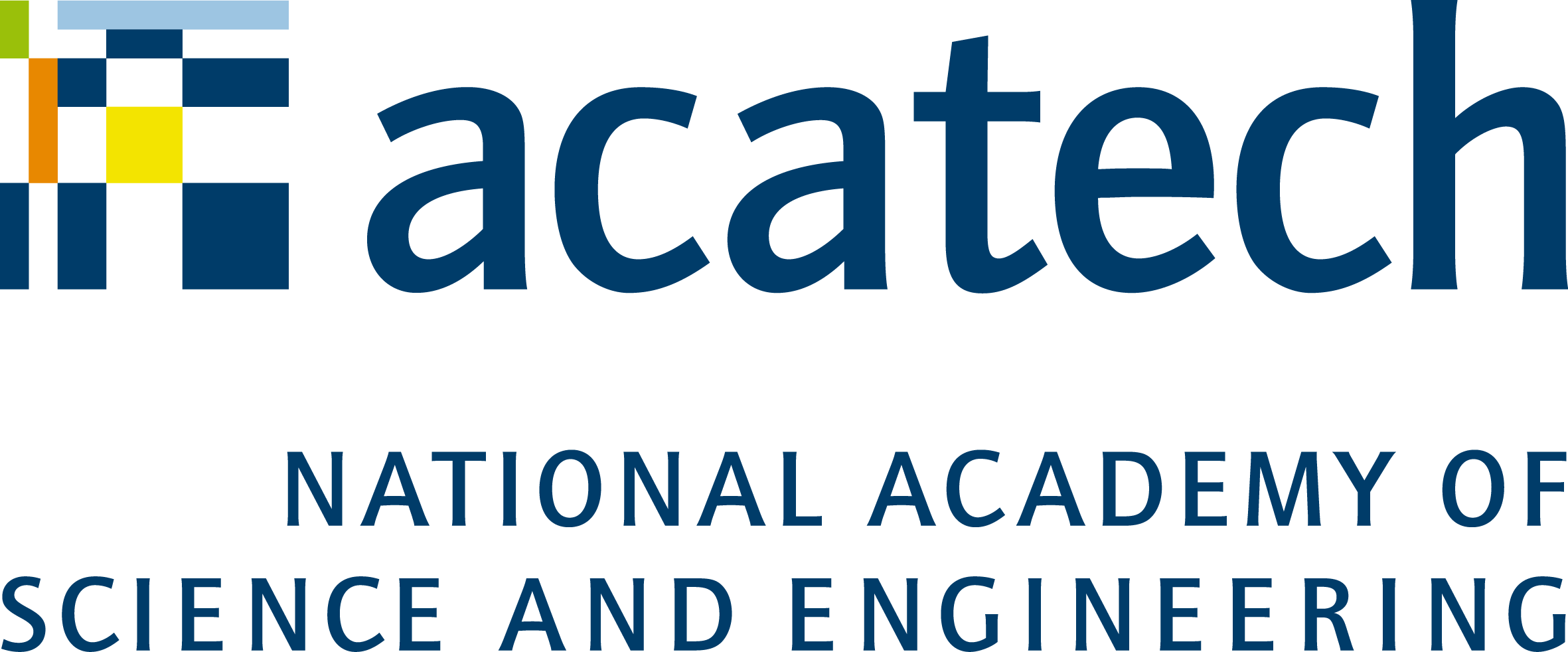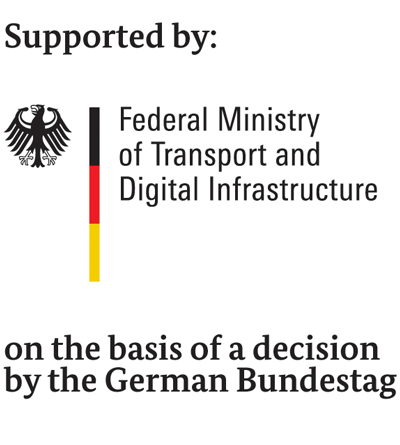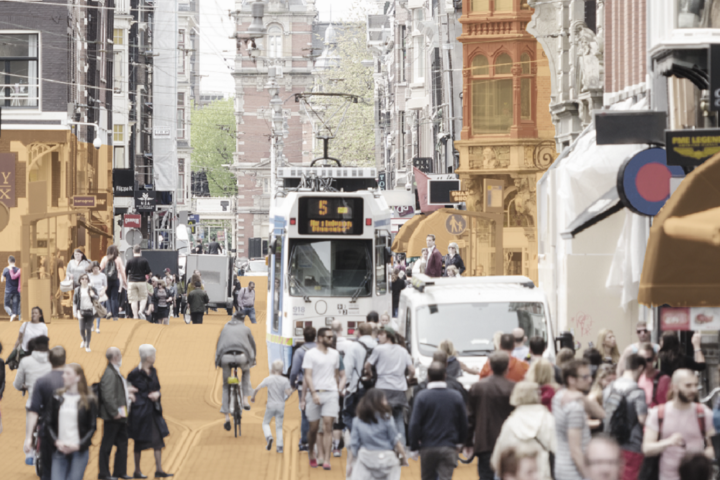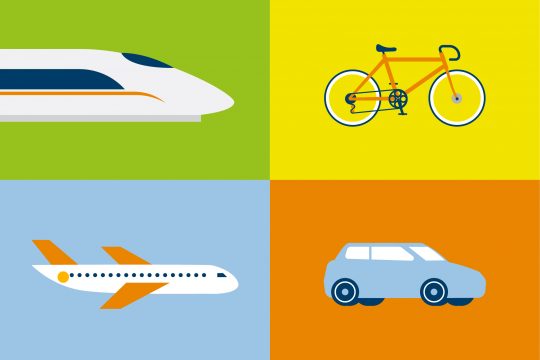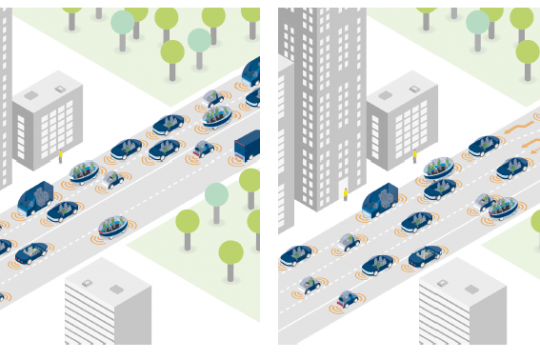New autoMobility II – Cooperative Road Traffic and Intelligent Traffic Control for the Mobility of the Future
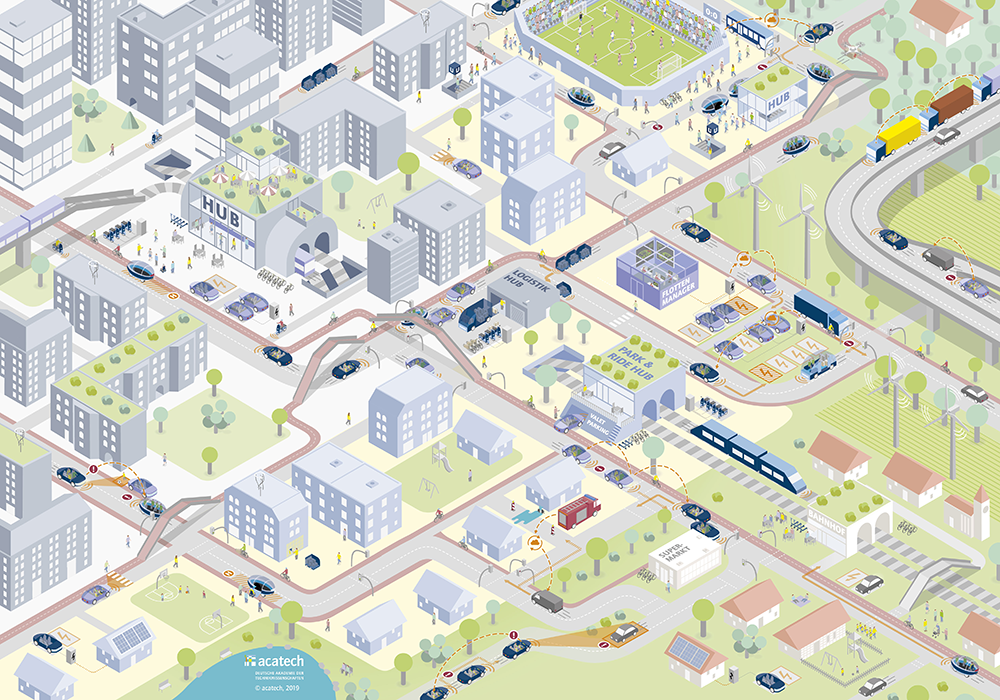
© acatech
Background and aims
The increasing automation, digitalisation and connectivity of vehicles and road traffic is fundamentally transforming our mobility system. To help policymakers address this trend and its many challenges and opportunities, it is necessary to carry out a scientifically robust analysis of the status quo, future developments and challenges, and to identify action areas and recommendations based on the results of this analysis. The interdisciplinary, cross-sectoral “New autoMobility” project group was established to meet this need. The project was led by the German Aerospace Center and coordinated by acatech.
In the project’s first phase (05/2015 – 12/2016), a target scenario and roadmap were developed for automated road transport and traffic in 2030. These were published in an acatech POSITION PAPER which focused on different automation functions, their potential applications and their impact on future road traffic. Concrete illustrations were provided in the form of international comparisons and current practical examples from Germany.
Building on the results of the first phase (“New autoMobility – The Future of Automated Road Transport and Traffic”), the project’s second phase was launched on 15 January 2018 under the title “New autoMobility II – Cooperative Road Traffic and Intelligent Traffic Control for the Mobility of the Future”. Following a progress report in October 2018, the final acatech STUDY was published on 11 September 2019 (German content).
The second phase of the project focuses on the twin aspects of cooperative road traffic and intelligent traffic control from a technological perspective. It widens the perspective from the vehicle technology itself to the interactions between new mobility technologies, trends and services in a digitally connected mobility system, offering a holistic, systemic and inclusive vision of the future of mobility. The project group hopes that this will contribute to the development of a strategy for accelerating the transformation of the entire mobility sector into a low-emission, automated and digitally connected mobility system.
Rather than being developed in isolation, it is critical to ensure that future vehicle designs integrate the major technological mobility trends of connectivity, electrification, automation and carsharing. This will reduce the strain throughout the entire integrated transport system, making it safer, environmentally-friendlier and better aligned with users’ needs.
Thomas Weber, acatech Vice-President
What are the potential benefits of connectivity and digitalisation for our future mobility?
Connected, digitalised mobility has the potential to deliver more comfortable, safer and environmentally-friendlier transport.
Electric mobility, automation, digitalisation, connectivity and innovative mobility solutions such as carsharing are already laying the foundations for a future transport system that consumes substantially fewer resources, requires less space and fewer vehicles, and uses existing infrastructure more efficiently. This future transport system will also be able to satisfy people’s specific mobility needs far more successfully and efficiently, helping them to actively overcome the challenges of both urbanisation and demographic change in rural areas. It will reduce the strain on our cities and allow older people living in the countryside to remain mobile.
Vehicle automation and connectivity can make a major contribution to better road safety. An innovative, intelligent traffic control system can improve traffic efficiency without jeopardising road safety or diminishing the benefits of new automated and connected vehicles. Such systems are thus key to the cooperative road traffic of the future, where vehicles and infrastructure will communicate and coordinate with each other, providing safer, environmentally-friendlier and more comfortable transport for everyone.
Accordingly, the second phase of the project develops future scenarios for intelligent traffic control and cooperative road traffic, infrastructure and interoperability, and delivering similar mobility service standards in both urban and rural areas. These future scenarios build on the target scenario for the automated road transport and traffic of the future that was formulated during the first phase.
Systemic target scenario: mobility and traffic management level
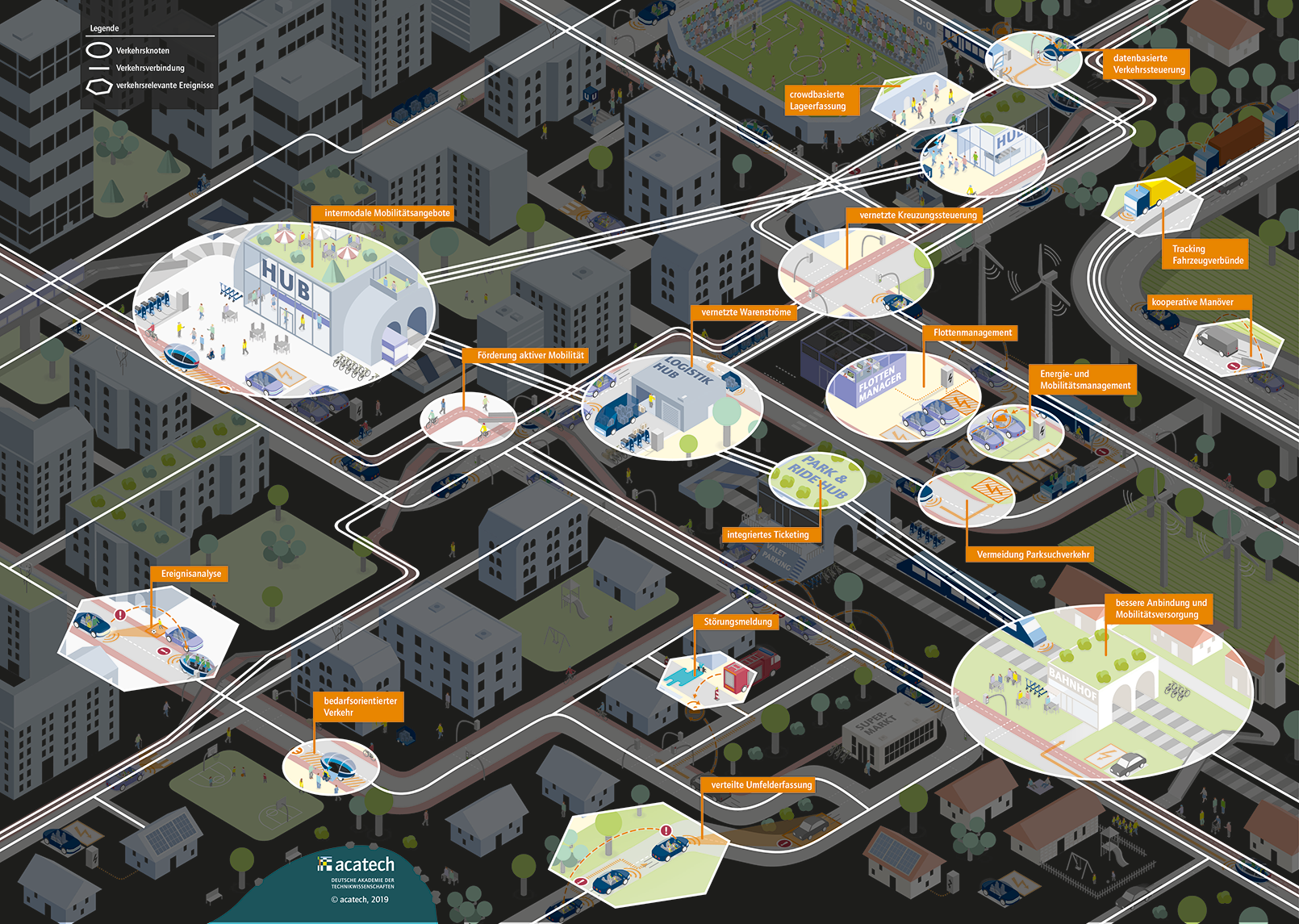
Future mobility scenarios
The target scenario and the themes addressed in detail by the New autoMobility II project are illustrated through future scenarios which describe how different connected mobility applications could work together in the future.
One of these future scenarios addresses commuter traffic. At present, commuter traffic is both stressful for road users and unpleasant for local residents. Every morning, commuters spend hours stuck in traffic jams as they travel into the city, while the lanes heading out of the city are often empty. Dynamic digital road signs could create additional lanes either by reducing lane width or by allowing outbound lanes to be used for inbound traffic when the situation demands.
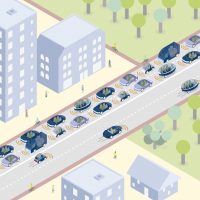
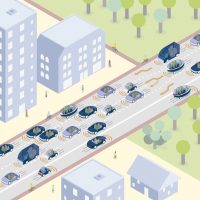
Flexible road charging for particularly congested routes could encourage people to switch to alternative routes or public transport, while innovative mobility solutions such as ridesharing can further relieve traffic congestion. Because they can run more frequently, automated trams and metros are able to transport larger passenger numbers. Finally, flexible working hours or working from home can also help to reduce rush hour traffic and commuter stress.
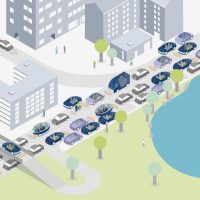
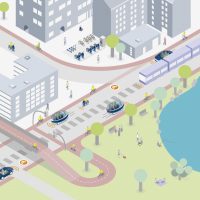
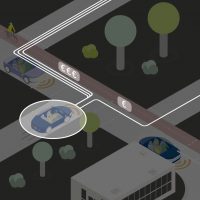
Another future scenario focuses on quality of life in our cities. It illustrates how the use of carsharing fleets, automated parking and consolidated parcel delivery services can reduce traffic, making space for more attractive land uses. In an automated mobility pilot area, vehicles are parked in underground car parks. The space that this saves above ground can now be used for parks, promenades and children’s play areas. Local residents and people visiting the neighbourhood make use of an automated carsharing fleet. An intelligent parking management system encompassing both the spatial and time aspects helps to ensure optimal distribution of parked vehicles throughout the city, as well as generating additional revenue for the local authority.
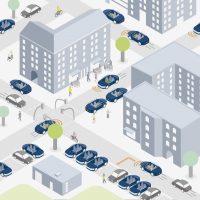
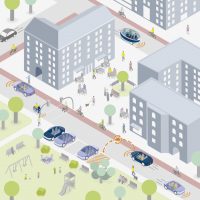
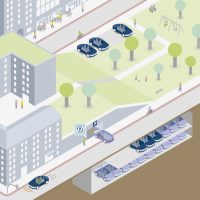
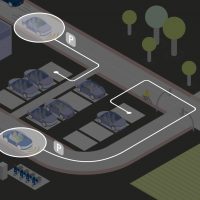
In addition, all packages sent to the neighbourhood are consolidated at logistics hubs, allowing last mile delivery of the collected packages to be carried out by a single provider. The fact that there are no longer several different delivery vehicles each carrying small numbers of packages reduces the overall volume of traffic in the area.
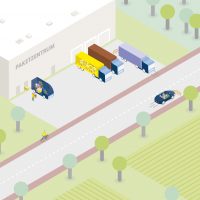
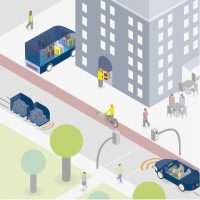
The “rural mobility hub” future scenario describes how connected, autonomous mobility can help to make travelling in rural areas significantly more attractive. Economically efficient operation of new public transport solutions such as autonomous trains and autonomous community-run bus services is a viable proposition even in sparsely populated areas. Meanwhile, new mobility services with low capital investment requirements – such as bicycle and electric scooter sharing – significantly reduce last-mile journey times. Rural mobility hubs that complement existing public transport services make public transport use in rural areas genuinely attractive for the first time.
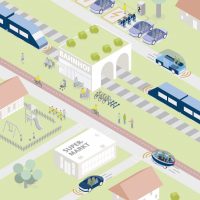
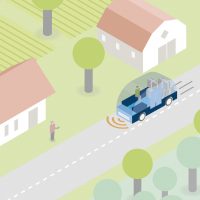
The research requirements needed to realise these future scenarios are outlined in detail in the acatech STUDY.
Areas for future action
The acatech STUDY focuses on the phase II themes of cooperation between road users with different levels of automation (e.g. automated communication between vehicles and cyclists) and intelligent mobility control (e.g. centralised and decentralised solutions for traffic flow optimisation). The report also addresses the associated infrastructure and systems interoperability requirements. As well as the technical aspects, it discusses the role of local government and possible forms of public participation, since these are key to both mobility planning and the roll-out of new technologies.
The acatech STUDY takes a detailed look at the role of local government in the future transformation towards a connected mobility system, as well as the associated challenges and opportunities for shaping the system. City and municipal authorities are key actors in the future mobility system, since they are best placed to ensure that it is tailored to the needs of local people. However, the financial resources and skills needed to implement new connected and automated transport solutions are lacking outside of the large metropolitan areas. Access to traffic-related data is especially important, in order to fully enable local government’s integrating role in a mobility data ecosystem. If connected mobility is to succeed as a future public service, it must be successfully implemented in both urban and rural areas.
Public acceptance will be key to the success of these future transformation processes. The study reviews the influencing factors, analyses best practices and formulates recommendations with regard to how participation, data privacy and transparency measures can be used to address public misgivings without hampering the development of technological advances and new digital business models.
The acatech STUDY goes on to identify the following concrete areas where action is required to enable the mobility of the future:
- Connect and integrate different modes of transport
- Strengthen local authorities and ensure that they are ready to shape the future of automated and connected driving
- Develop cooperation and interaction principles for a mixed traffic environment
- Develop licensing systems for cooperative vehicles
- Create a mobility data ecosystem
- Roll out intelligent traffic control and determine federal competencies
- Combine a public dialogue and participatory formats with spaces where people can experience and experiment with the technology
- Invest in R&D, strengthen science and industry
The project group hopes that these areas will be jointly discussed and developed by policymakers, academia, industry and the public, in order to enable and successfully shape the connected mobility of the future.
Organisation and working methods
The project group comprised over 50 members drawn from more than 30 organisations in industry, academia and civil society. In order to address the traffic and mobility of the future from a strategic perspective, a series of thematic workshops were held, providing input for the progress report and the acatech STUDY. As well as the project group members, external experts were also invited to attend the workshops, particularly stakeholders from local government and start-ups. Efficient running of the project was delivered through the thematic workshops and coordination by an editorial team at acatech.
The project leader was Prof. Dr. Karsten Lemmer, Executive Board Member for Energy and Transport at our project partner the German Aerospace Center (DLR). The DLR also contributed its specific expertise in this field.
Further information
New autoMobility – The Future of Automated Road Transport and Traffic (1st phase)
